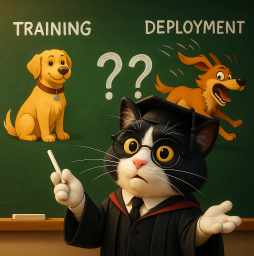
AI Safety IV: Sparks of Misalignment
This is the last, fourth post in our series...
Facial identification and verification for consumer and security applications.
Activity recognition and threat detection across camera views.
Spatial computing, gesture recognition, and gaze estimation for headsets.
Millions of identities and clothing options to train best-in-class models.
Simulate driver and occupant behavior captured with multi-modal cameras.
Simulate edge cases and rare events to ensure the robust performance of autonomous vehicles.

Together, we’re building the future of computer vision & machine learning
Facial identification and verification for consumer and security applications.
Activity recognition and threat detection across camera views.
Spatial computing, gesture recognition, and gaze estimation for headsets.
Millions of identities and clothing options to train best-in-class models.
Simulate driver and occupant behavior captured with multi-modal cameras.
Simulate edge cases and rare events to ensure the robust performance of autonomous vehicles.

Together, we’re building the future of computer vision & machine learning
Facial identification and verification for consumer and security applications.
Activity recognition and threat detection across camera views.
Spatial computing, gesture recognition, and gaze estimation for headsets.
Millions of identities and clothing options to train best-in-class models.
Simulate driver and occupant behavior captured with multi-modal cameras.
Simulate edge cases and rare events to ensure the robust performance of autonomous vehicles.

Together, we’re building the future of computer vision & machine learning
Facial identification and verification for consumer and security applications.
Activity recognition and threat detection across camera views.
Spatial computing, gesture recognition, and gaze estimation for headsets.
Millions of identities and clothing options to train best-in-class models.
Simulate driver and occupant behavior captured with multi-modal cameras.
Simulate edge cases and rare events to ensure the robust performance of autonomous vehicles.

Together, we’re building the future of computer vision & machine learning
We have been talking about the history of synthetic data for quite some time, but it’s time to get back to 2020! I’m preparing a new series, but in the meantime, today we discuss a paper called “Learning From Context-Agnostic Synthetic Data” by MIT researchers Charles Jin and Martin Rinard, recently released on arXiv (it’s less than a month old). They present a new way to train on synthetic data based on few-shot learning, claiming to need very few synthetic examples; in essence, their paper extends the cut-n-paste approach to generating synthetic datasets. Let’s find out more and, pardon the pun, give their results some context.
Optical 3D range sensors, like RGB-D cameras and LIDAR, have found widespread use in robotics to generate rich and accurate 3D maps of the environment, from self-driving cars to autonomous manipulators. However, despite the ubiquity of these complex robotic systems, transparent objects (like a glass container) can confound even a suite of expensive sensors that are commonly used.